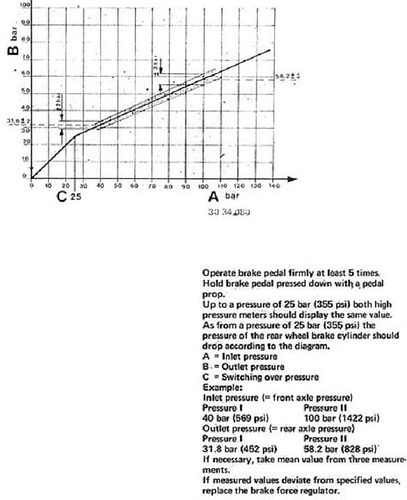I had thought that our brake bias valve is on/off. That is to say at a certain pedal pressure the bias valve closes and the rear brakes do not get more hydraulic pressure. Additional pedal pressure would only clamp the fronts down harder, but not the rear.
The pictures that Rob posted some months ago clearly show a valve and a spring. I still don’t understand how that can be “proportional”. Yet this graph from an OEM repair manual clearly indicates proportional behavior.
The cliff notes of this is that at up until 355psi of hydraulic pressure both front and rear get the same braking pressure (this assumes that the front and rear have the same size cylinders, but do they?). At 355psi there is a “knee” in the curve where it changes slope. From there on additional pedal pressure affects front and rear differently. If I am interpreting the graph correctly, it indicates that after 355psi a 100/60 bias is created.



